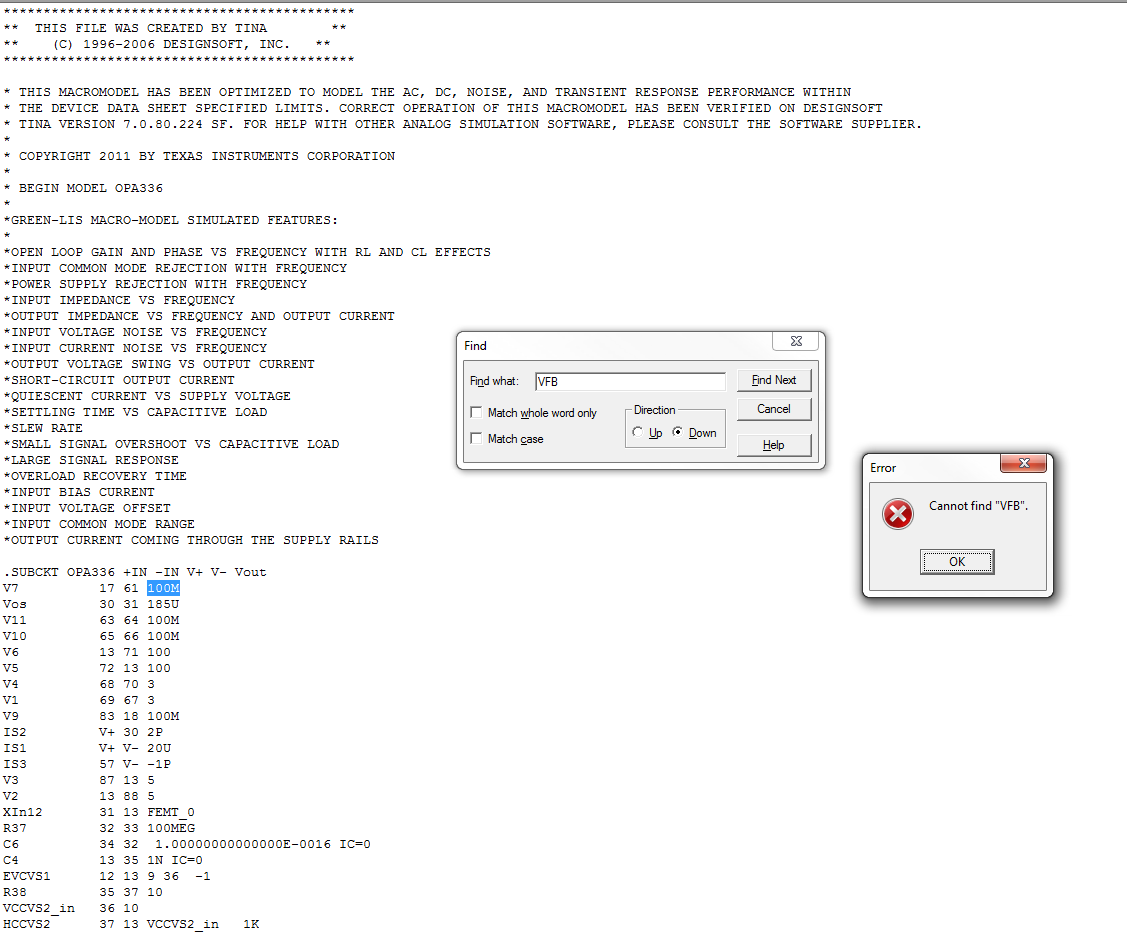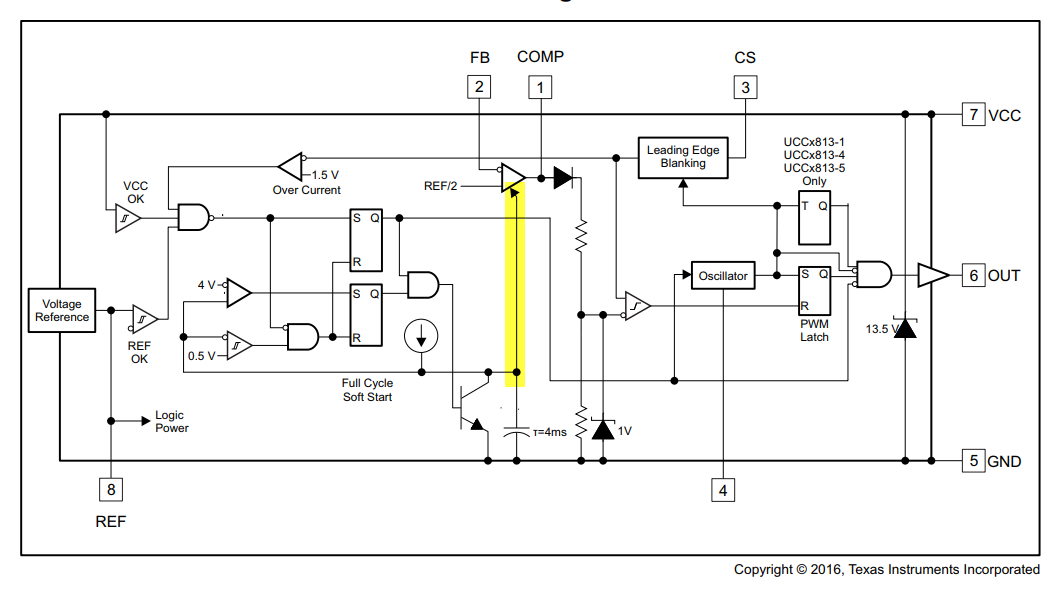Other Parts Discussed in Thread: TINA-TI, , OPA336
Tool/software: TINA-TI or Spice Models
Team,
My customer has the following issue:
I downloaded the UCCx813-1A.lib model for simulating UCC2801PW. The value of VR2 inside the unprotected model is missing. Can you look into that?
Regards,
Aaron



